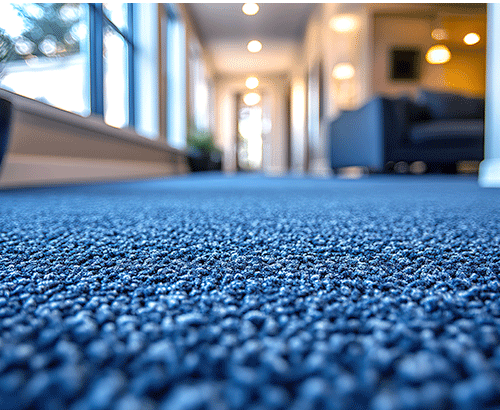Prefabrication in Construction: Strategic Considerations for Building Products Manufacturers

Prefabrication, the process of constructing components or entire buildings off-site and then assembling them on-site, is not new to the construction industry, but it has continued to gain momentum in recent years due to changing market demands.
This was particularly highlighted during the COVID-19 pandemic when firms were challenged with unprecedented obstacles and were forced to think differently about project delivery. Additionally, prefabrication is increasing in utilization as industry stakeholders continue to realize the key benefits of prefab, such as quality control, schedule adherence and waste reduction.
As prefabrication continues to evolve, building products manufacturers (BPMs) must understand how to position their firms for success. This will require adjusting their approach to effectively align with changing market dynamics. BPMs have an opportunity to separate themselves from their competition by partnering with customers to support their transitions to prefab operations.
Current Market Trends
Project demands, owner requirements and delivery schedules are constantly evolving, with many projects experiencing expedited schedules. This squeeze is rippling throughout the industry, from the initial design phase to finishing punch lists. To compete and win in their markets, building products firms must understand the shifting demands of owners and contractors, especially when it comes to serving those employing prefabrication on projects.
The increase in prefab construction is driven by multiple factors, including:
- Efficiency and quality control: Prefabrication increases speed to market through concurrent production in a controlled environment. This means fewer weather delays or other slowdowns that can pinch timelines and prompt costly late fees. The finished product is designed to maximize resources, using a standardized process, so finished products are accurately and efficiently manufactured. Reducing mistakes yields higher cost-effectiveness and improves safety, which keeps operating expenses in check and protects margins.
- Labor shortages and skilled workforce: Labor shortages are common across the construction industry. Prefabrication can improve workforce optimization by reducing the number of people needed in the field and shifting them to a factory environment. Prefabrication also enables scheduling efficiency, because it is easier to stick to the schedule without weather delays, bottlenecks and other aspects of traditional construction that can slow project delivery.
- Project complexity and design flexibility: Projects are growing increasingly complex, necessitating a shift in how they are designed and built. Designing for prefabrication enables greater flexibility and allows for greater standardization or customization, depending on what the project needs.
Prefabrication Uses by Segment
As with all construction, the uses of prefabrication can vary greatly by segment and project type. Some sectors implemented prefabrication decades ago, while others are just getting started.
- Residential: The repetitive nature of certain types of residential design makes them more conducive to factory production and accelerated on-site assembly. Examples include modular housing, panelized construction and pre-cut framing.
- Commercial: Hospitality, hotels, warehouse and retail owners are embracing prefabrication for its speed, quality control and ability to mass-produce standard components. For example, hotels rely on bathroom pods and modular building systems, while warehouse, retail, office and other commercial uses implement prefab wall panels, floor systems and curtain wall systems into their design and construction.
- Institutional: Education and health care are increasingly deploying prefab to accelerate project timelines and meet the growing demand for these services. Health care and science require controlled environments, specialized equipment and intricate mechanical and electrical systems. Modular patient and dorm rooms; bathroom pods; and mechanical, electrical and plumbing (MEP) racks e xpedite schedules and ensure quality control with minimal disruption.
What This Means for Building Products Manufacturers
Building product manufacturers must align with the interests and needs of general contractors, architects and subcontractors to integrate prefabrication into their business models. Customer product requirements will evolve as they increase their adoption of prefab. One solution doesn’t work for every business. When customers increasingly utilize prefabrication, their product requirements evolve to include more standardized solutions that can easily integrate into the assembly process. This creates openings for manufacturers to work with firms earlier in the process to develop products that can align with modular building systems and seamlessly integrate into these processes from high-volume pieces to custom-design components.
Manufacturers must also collaborate closely with contractors to ensure alignment with the processes and design requirements of the prefabrication approach. This means providing products that are easily integrated into the streamlined processes and modular building systems inherent to prefabrication. An understanding of building information modeling (BIM) and how it works with prefabrication is important. This will allow manufacturers to coordinate across different building product types from HVAC to flooring to plumbing.
As prefabrication adoption increases, another change for manufacturers will be supply chain and delivery models for products. The supply chain may differ for prefabrication stages, meaning that building products companies need to understand where, when and how different aspects of the project are being assembled and ship products accordingly.
Strategic Considerations for Building Products Manufacturers
When it comes to prefabrication, building products companies must understand how the market is evolving, how customers are adapting to those changes, and how those trends will challenge them in meeting their clients’ needs. This opens the door to creating products that are tailored to the repeatable, high-production approach to construction brought about by prefabrication trends.
Key considerations include:
- Partnerships and early involvement: Establish relationships with key prefabricators early to understand supply chain and logistics requirements to ensure efficient coordination and procurement of products. This also requires manufacturers to provide input on design requirements for both standard solutions andcustomized options and presents opportunities for product development that allow for seamless integration into prefab assemblies.
- Education and training: Prefabrication is a different approach to building construction, and many in the industry lack sufficient understanding of how it works. BPMs should leverage their expertise of the manufacturing process and how to navigate the supply chain to better inform key stakeholders. By helping train general contractors, architects and subcontractors, manufacturers can increase awareness of products and how they apply to prefabrication. One way to do this is by developing how-to videos and explainer content that supports sales teams and provides self-service learning for clients.
- Marketing and product positioning: Effectively marketing products should include an emphasis on their compatibility and ease of integration with the prefabrication process. Participating in industry events and showcasing case studies of successful integration are good ways to directly talk to stakeholders and demonstrate value. Messaging should focus on the efficiency, quality and design flexibility of the product in relation to prefabrication. It’s important to understand where customers are in the prefabrication adoption curve and how their specific product needs and demands are evolving.
Customer Education in Action
Webinars can be effective venues for customer education. For example, hosting a webinar focused on the evolution of prefabrication and how products have been successfully utilized in projects can demonstrate their value. Invite architects and engineers to join as speakers and to market the event to their customers. Talk to accrediting organizations to see if continuing education credits can be offered, which will draw more attendees and establish the firm as a trusted source. Webinars and other forms of recorded training can be cut into short clips to use on websites, in email newsletters and in sales decks. They can also generate leads through preregistration.
By addressing these strategic considerations, building products manufacturers can position their products and their firms to better meet the demand for prefabricated construction solutions. As prefab continues to grow in utilization, it presents both challenges and opportunities for building products manufacturers. Understanding the driving factors and potential opportunities of prefabrication differentiates the company and helps identify new products and service offerings.



